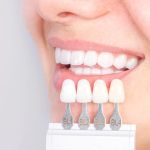What is Tooth Extraction Surgery?
Tooth extraction surgery is a common dental procedure that involves removing a tooth from its socket in the jawbone. It is often necessary when a tooth can't be easily removed with regular forceps, such as when it's impacted, broken, or has severe decay. Wisdom teeth removal is frequently a form of surgical extraction.
Reasons for Tooth Extraction Surgery
The most common reason for surgical tooth extraction is an impacted tooth, which is stuck beneath the gum line and can cause pain and infections. A tooth that is severely damaged or decayed and can't be saved through other treatments may also require extraction. Additionally, if you're undergoing orthodontic treatment and need to make room for other teeth, surgical extraction could be necessary.
The Procedure
The procedure typically starts with the administration of a local anesthetic to numb the area around the tooth. In some cases, dental sedation or general anesthesia may be used, especially if multiple teeth need to be extracted. The dentist then makes an incision in the gum tissue to expose the tooth and surrounding bone. Special instruments are used to loosen the tooth and remove it carefully. Sometimes, the tooth may need to be divided into smaller pieces for easier removal. After the tooth is extracted, the dentist cleans the area, places stitches if needed, and applies a gauze to stop bleeding and encourage clot formation.
Aftercare and Recovery
Aftercare is crucial for a successful recovery. Immediately after the procedure, you should bite firmly on the gauze provided by the dentist for at least 30 minutes to control bleeding. Applying an ice pack to the cheek for 10 minutes at a time with 20-minute breaks in the first 24 to 48 hours can help reduce swelling. Avoid exercise, heavy lifting, and other strenuous activities for a few days. Take prescribed pain medication and antibiotics as directed. Avoid smoking and drinking alcohol as they can delay healing. Starting 24 hours after the surgery, gently rinse your mouth with warm salt water several times a day. Stick to soft foods to avoid irritating the extraction site. Make sure to attend all follow-up appointments and follow your dentist's instructions.
Risks and Complications
Like any surgical procedure, there are risks associated with tooth extraction surgery, such as bleeding, infection, nerve damage, and other complications. However, following the dentist's aftercare instructions can minimize these risks.
Insurance Coverage and Expectations During Recovery
In most cases, surgical tooth extraction is covered by dental insurance, but it's important to check with your provider to understand your coverage and potential out-of-pocket costs. During recovery, you can expect some swelling, discomfort, and bleeding. Most patients can return to normal activities within 48 hours, but recovery times can vary depending on individual circumstances and the complexity of the extraction.
Tooth extraction surgery may seem daunting, but when performed by a skilled professional, it is a safe and effective way to address dental issues and improve oral health. Understanding the process, preparing properly, and following aftercare instructions are key to a smooth recovery and a healthier smile.

 Barkley Pediatric Dentistry
Barkley Pediatric Dentistry Dental365 - Throgs Neck
Dental365 - Throgs Neck RiverRock Dental
RiverRock Dental Deborah A Shoemaker, DMD
Deborah A Shoemaker, DMD Elmwood Park Cosmetic Dentistry
Elmwood Park Cosmetic Dentistry Dr. George Diaz, DDS
Dr. George Diaz, DDS The Importance of Oral Health Education During Pregnancy for a Healthy Pregnancy
The Importance of Oral Health Education During Pregnancy for a Healthy Pregnancy Why Skipping Dental Checkups Can Lead to Bigger Oral Health Problems
Why Skipping Dental Checkups Can Lead to Bigger Oral Health Problems Advantages of Porcelain Dental Restorations
Advantages of Porcelain Dental Restorations Best Tips for Brushing Your Teeth Properly for Healthy Gums: Essential Techniques for Oral Health
Best Tips for Brushing Your Teeth Properly for Healthy Gums: Essential Techniques for Oral Health How Can Diabetes Cause Tooth and Gum Problems? Preventing and Managing Oral Health Issues
How Can Diabetes Cause Tooth and Gum Problems? Preventing and Managing Oral Health Issues Healthy Habits for Promoting Good Oral Health and Hygiene: Tips for a Healthy Smile
Healthy Habits for Promoting Good Oral Health and Hygiene: Tips for a Healthy Smile